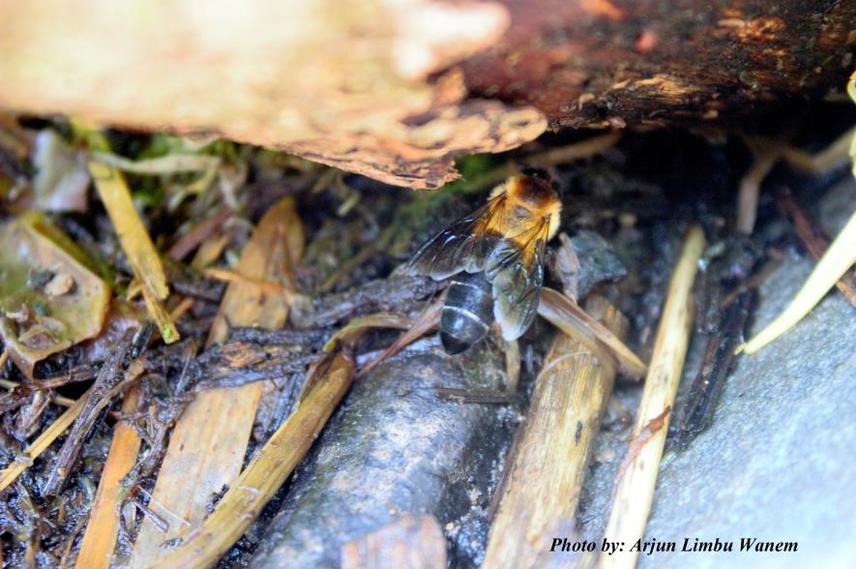Susma Giri
Apis laboriosa, the world’s largest honeybee species, is both ecologically and culturally important but has been declining recently likely due to parasitism, among others. Whereas parasitism in bees is influenced by geographic and temporal variation in a number of abiotic factors, environmental temperatures may be among the critical determinants. In this project, I aim to investigate the largely unexplored effects of environmental temperature on loads and prevalence of five major bee parasites: Varroa spp., Locustacarus buchneri, Nosema spp., Crithidia spp., and conopid fly larvae in A. laboriosa from Annapurna Conservation Area, Nepal. Given that awareness is among the first steps towards successful management and conservation, the aim of this project is also to raise awareness on A. laboriosa by training new generation of students, conducting a town hall meeting with the local people, updating information on appropriate websites and conducting a symposium on pollinators of Nepal, to mention a few.

A. laboriosa foraging near the cattle-shed. We have found many bees hovering near cow dung. © Arjun Limbu Wanem
Native bees are the most important pollinators in both natural and managed ecosystems such that recent declines in bee populations are with serious ecological and economic implications. Parasites may be a primary driver of declines in many native bees. Parasites may challenge host physiology in several ways. They may weaken the host by consuming host's energy reserves and by inducing a host immune response both to the parasites themselves and to any pathogens they vector. These combined effects can reduce survival and performance of individuals and may ultimately limit population viability. The outcome of this critical interaction between native bees and their parasites may be mediated in part by environmental temperatures, with critical implications for geographic and temporal variation in persistence of native bee populations.
In this project, I aim to investigate the largely unexplored effects of environmental temperature on host-parasite interactions in Apis laboriosa from Annapurna Conservation Area (ACA), Kaski, Nepal. A. laboriosa are distributed across a large altitudinal (and therefore temperature) gradient within the ACA, providing a unique opportunity to measure loads and prevalence of five major bee pathogens: Varroa spp., Locustacarus buchneri, Nosema spp., Crithidia spp., and conopid fly larvae. In each site, I will collect individuals using visual netting and euthanize in cyanide within 30s of capture. Upon measuring dead mass I will check for the presence of Varroa spp. using icing sugar. The bees will then be cleaned and whereas some individuals will be stored in a cooler for dissection and identification of L. buchneri, conopid fly larvae and for counting of N. spp. spores, others will be stored in 99% ethanol for PCR detection of Nosema spp. and Crithidia spp. Once brought to the lab, the samples will be stored at -20 ºC until further analyses. Weather conditions at the time of bee collection will also be assessed using Kestrel environmental meter.
This research will not only enhance our understanding of parasitism status of A. laboriosa and related species (given the likelihood of pathogen spillover from one species to another) but also to its distribution because I also plan to collect data on GPS location of hives in the study sites and along the route. The results from this study will help elucidate the effects of environmental temperatures on population-level impacts of parasites on native bees, providing critical insight into how native bee populations may respond to rising global temperatures.
Header: A. laboriosa hives. Black hives represent occupied ones and lighter hives are not occupied ones. © Arjun Limbu Wanem.